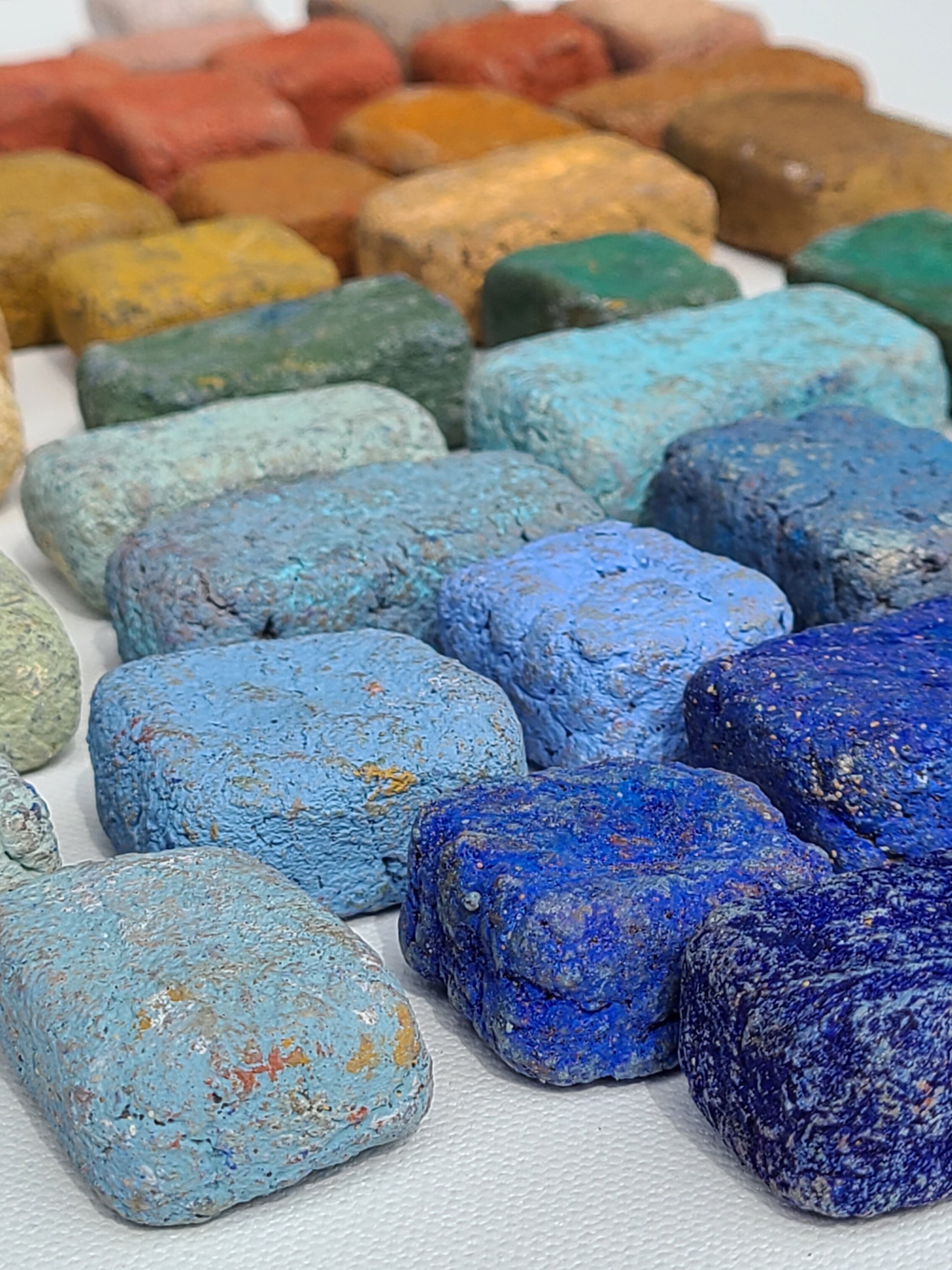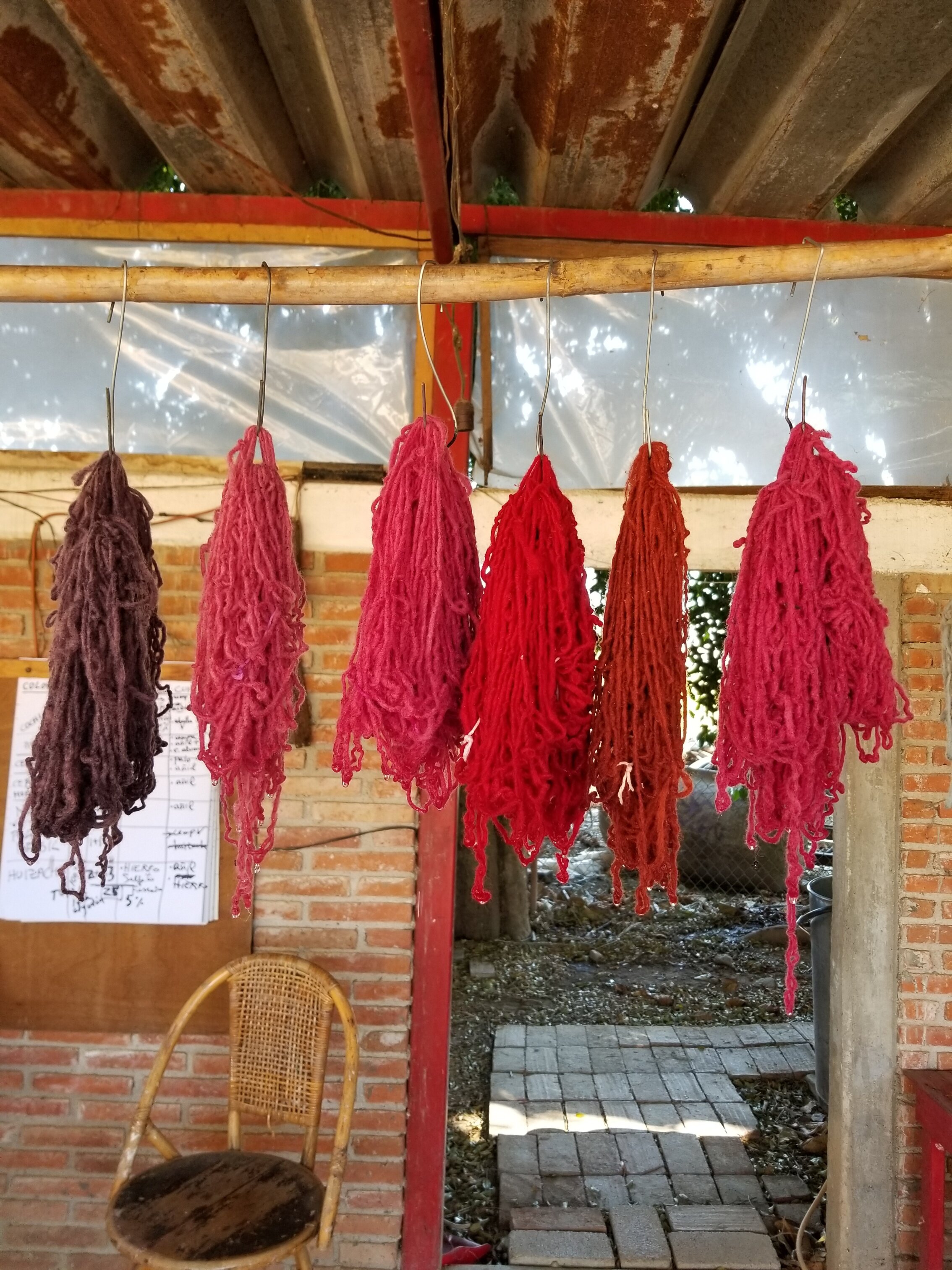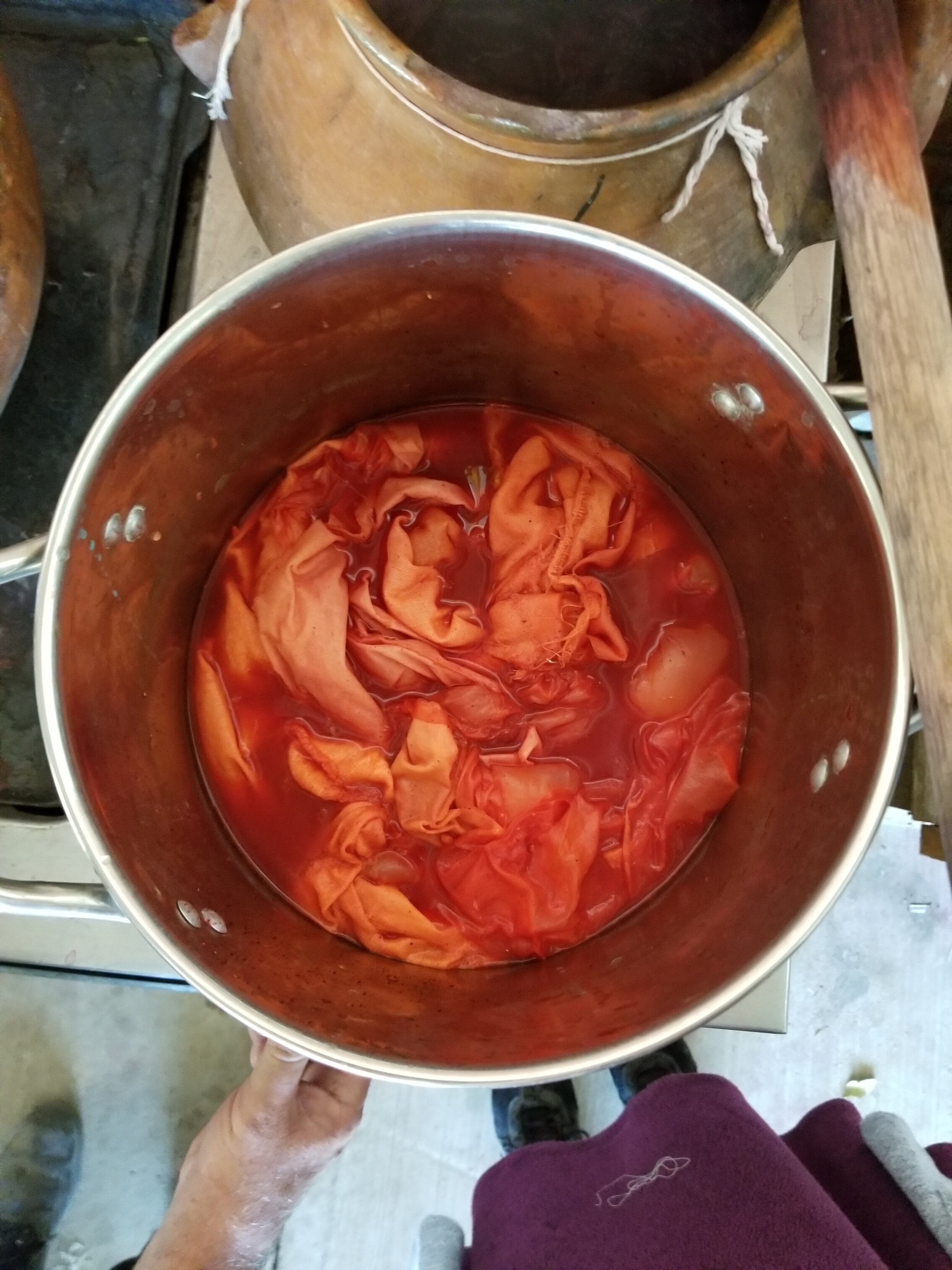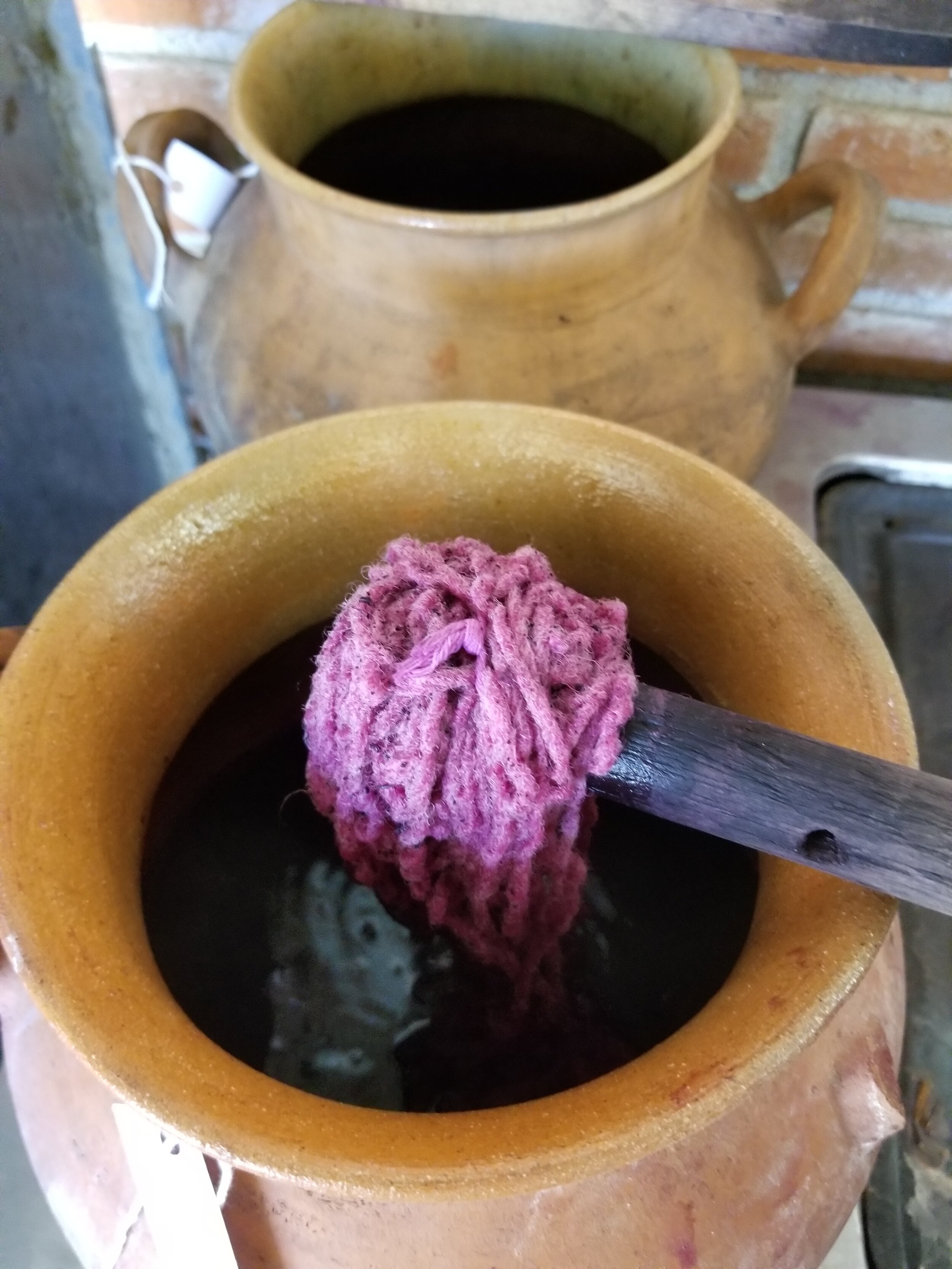Natural order
I’m a big fan of squares in my art.
To be more accurate, I should probably broaden that statement to say ‘I love parallelograms’ because rectangles and rhombi pop into my artwork as well. Since a square is a kind of rectangle and rhombus, but neither a rectangle nor a rhombus is necessarily a square, I may want to be more inclusive of the linear shapes that have inspired me for decades.
All kinds of naturally dyed parallelograms playing on this canvas!
Side note: Can you tell that I’ve been tutoring my son, Mason, in geometry this spring?
So, as I sat down to write this month’s Trail Tale to share my journey into #The100DayProject, I realized I was playing with squares again. Only this time, in an algebraic way: 10x10=100, or more simply written 10².
Projection
When mixed media artist, Natalie Dadamio, suggested I try #The100DayProject this year, I thought it would be a fantastic way to deepen my commitment to my creative practice. Knowing I would be grounded from travel, at least of the air variety, diving into 100 days of a focused art ‘project’ seemed like a wonderful way to enrich the time in my home studio.
We used to have a kitchen island, but that real estate is now gone, along with the dining room table.
But why 100 days, and how would this differ from the extensive hours in the ‘off-hours’ that I’ve already heavily invested in this crazy creative biz dream of mine?
Seems the consensus is as follows on the power of 100 days of focus:
It is long enough to create a habit
It is short enough to see the finish line
It requires setting an achievable goal
It demands planning to allocate time and space
It is extremely helpful to break it up into manageable micro-steps
Coincidentally, three of my 2020 goals are hovering right now in the 100 day range. Making healthy nutrition choices, increasing movement and meditating have become daily habits. Ways of living that seemed to elude me throughout the years are wonderfully entrenched in my world today.
And, I’m at least 10x10 times happier.
All smiles on the cochineal farm in Oaxaca, Mexico, March 2020.
100 days of art….bring it on!
Hash it out
First thing first was to decide what my 100 Day Project focus would be. As you may have noticed, I suffer from a kind of creative distraction disorder. My artwork crosses all kinds of discipline and medium lines as my curiosity drags me from one to another and back again.
So, how was I to choose just one of my many passions?
Easy: #100DaysOfMultiPassion
But, in an effort to corral those multi-passions of mine into a more cohesive project, I needed a theme.
One idea came to me naturally: #100DaysOfColorsFromNature
The rainbow of mineral pigments I foraged while on residency in Oaxaca, Mexico, March 2020.
Now, with not one, but two hashtags declaring my project, there was one tiny manageable micro-step I had to take.
Breaking it all down by 10.
Chunky monkey
As I hit publish on this blog, I’m about to celebrate my 25th day – one quarter done! For those of you following my adventures on Instagram, you have had a preview of where these 100 days are meandering. For those of you on Facebook – sorry!
Breaking the project down into 10 days each of 10 different ‘topics’ surrounding natural color felt like the perfect solution to keep me on task. Plus, I argued, it would allow me to truly explore all of the ways nature’s palette has inspired my art.
Pigment color studies from the regions of Peru where we explored and foraged in June/July 2019.
If you’ve read this far, you are in for a sneak peek of the full 10x10 plan. Plus, I’ll throw in a little commentary and few more photos of chunks 1 and 2 (Days 1-20) which have already flown by:
Days 1-10: Natural dyes
I may have started using organic colors in ice, but the list of materials I have dyed from nature also include textile, paper, bioplastics and even eggs. I may have left out mung bean and dough in this project, but I added a new piece to the dye mix – ink!
Cookin’ colors in the kitchen to make inks from red cabbage, black bean, avocado skins and turmeric.
Days 11-20: Mineral pigments
Over the past 1.5 years, I widened my color scope to include the earth beneath my traveling feet. Each day, I shared some of the subtle hues I foraged from 7 unique locations: Washington, Idaho, Oregon and California on the west coast, Pennsylvania to the east and Mexico and Peru to the south.
Pigmented stones foraged along Wissahickon Creek in Philadelphia, PA, July 2019.
Days 21-30: Textile colors
I’m midstream in the 3rd chunk and creation is underway. Every day I’m building a quick color study with textile remnants I have collected from larger pieces I built in Oaxaca. The idea is to push the design from a limited natural palette in a small space.
Textile Stack Series of quick color studies during #The100DayProject. Drop me a line to purchase.
If you want a piece of the action, each one of these mixed media works on canvas is for sale at $40.
What a steal of a deal!
Now the next 7 chunks are part of the plan, but I reserve the right to make adjustments along the way:
Days 31-40: Installation – I will place 10 new naturally colored sculpture clusters within 0.5 miles of my house.
Days 41-50: Oaxaca Minis – I will build 10 new 8x8 textile works on canvas from the full Oaxaca color range.
Days 51-60: Bioplastics – I will brew up all kinds of wonder with gelatin, algae and botanical dyes.
Translucency and botanical dyes all wrapped up in bioplastics.
Days 61-70: Monoprints – I’ve wanted to explore this technique, so I plan to create 10 pieces using only natural colors.
Days 71-80: Three shape challenge - Textile
Days 81-90: Three shape challenge - Monoprint
Days 91-100: Three shape challenge: Installation
Let’s just say the last 3 chunks are meant to hold my feet to the ‘simplicity’ fire.
The same artist who enticed me to join #The100DayProject (Natalie Dadamio), also challenged me to ONLY use three shapes in my work during the 100 days. I figured 3 chunks totaling 30 days fit perfectly into the 3 shapes theme.
The 3 primary colors very cooly represented by turmeric, red beet and blue butterfly pea infused ice.
These three are for you, Natalie!
Cubism
Riding shotgun to my 100 days, Mason has found a teeny space for his geometry book on the dining table that is now smack dab in the middle of my studio, aka our kitchen.
We started solving for volume this past week. All of the 2 dimensional shapes have introduced their 3 dimensional siblings: spheres, cones, pyramids and cylinders.
And yes, the glorious square is full of pride and flaunting its cube cousin just to make me smile!
My trusty installation travel buddies: earth pigment painted paper pulp blocks. Stack ‘em up!
I sure do love cubes…naturally.





















